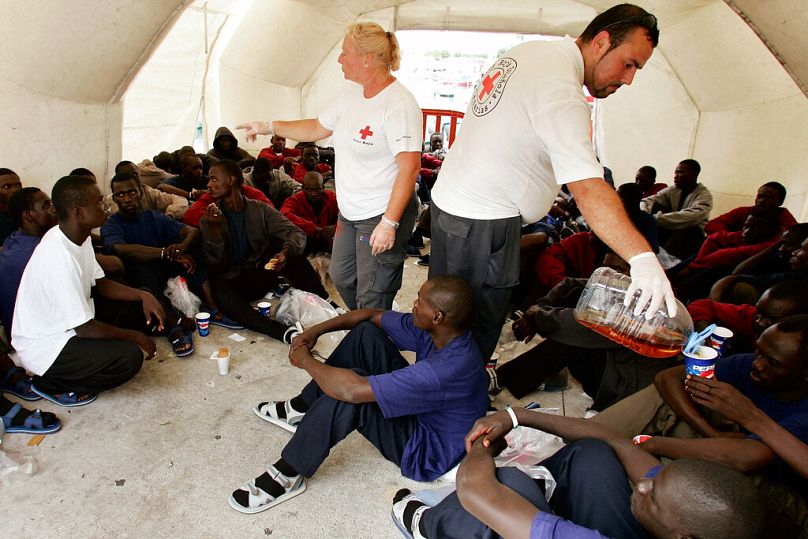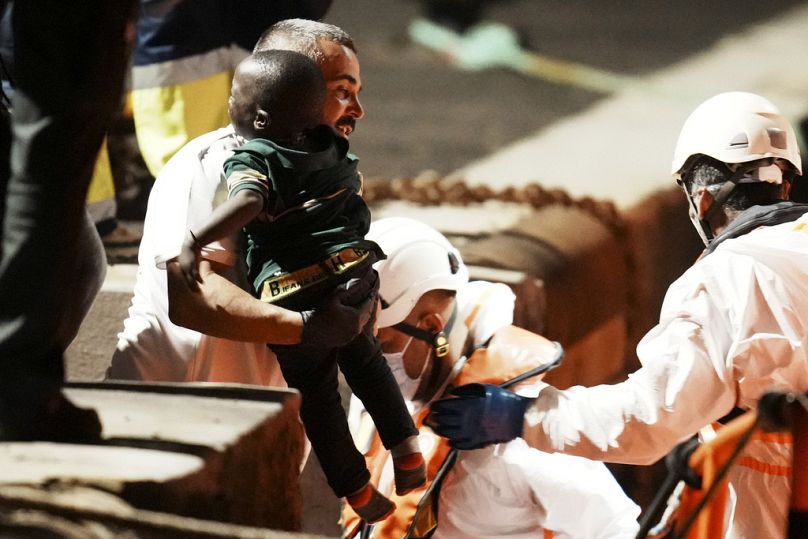The figure exceeds the previous high during the migration crisis of 2006, when 31,678 migrants disembarked in the Canaries.
Spain’s Canary Islands have set a new record for the number of irregular arrivals to the archipelago, with more than 32,000 migrants making the treacherous boat journey this year so far.
Most of them are from Senegal.
The islands, located near the African continent, have been used for decades as a stepping stone to Europe. Though the majority of arrivals are from Senegal, there are also boats departing from Gambia, Mauritania, Morocco and the Western Sahara.
According to figures released by Spain’s Interior Ministry and local emergency services, at least 32,029 people landed on the islands from January to November this year, exceeding the previous high set during the migration crisis of 2006 when 31,678 migrants disembarked in the Canaries.
Smugglers in Senegal pack young people looking for better opportunities in Europe into old artisanal fishing boats. The journey from Senegal to the Canaries usually takes a week of difficult upwind sailing for around 1,600km.
Migrant boats frequently shipwreck or disappear in the Atlantic.
To avoid border controls along the coast, smugglers take longer journeys, navigating first west into the open Atlantic before continuing north to the Canaries - a detour that brought many to the tiny westernmost El Hierro island, at times overwhelming local authorities and emergency services.
Once a beacon of democratic stability in the region, Senegal has been engulfed in socio-political unrest with violent clashes earlier this year.
President Macky Sall's embattled government has dissolved Ousame Sonko's opposition party, popular among young voters. The political crisis along with a lack of jobs, rising food prices and depleting fishing stocks have caused thousands to leave the country.
Faced with a record number of arrivals, Spain's Interior Minister Fernando Grande-Marlaska flew to the Senegalese capital of Dakar last week to press the government to do more to stop boats from leaving.
Grande-Marlaska urged his Senegalese counterpart Sidiki Kaba to "act more quickly," and avoid more deaths. At least 512 people have died on that route so far this year according to the International Organization for Migration, though the figure is believed to be a vast undercount.
Spain has nearly 40 police and civil guard officers, four boats, a helicopter and an aircraft deployed in Senegal to monitor the coast and crack down on smuggling networks in collaboration with local authorities.
Madrid says the joint effort has successfully stopped 7,132 people from leaving Senegal this year.
During the 2006 “cayucos crisis” - named after the large canoe-shaped boats from Mauritania and Senegal often used by the smugglers - Spain signed agreements with 10 African countries to accept returned migrants and stop new boats from leaving.
In the following years, arrivals to the Canary Islands declined and had been largely manageable until they spiked again in 2020 as a result of increased surveillance along the favoured Mediterranean Sea route, among other factors.













